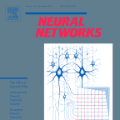We introduce DeepFHT, a survival-analysis framework that couples deep neural networks with first hitting time (FHT) distributions from stochastic process theory. Time to event is represented as the first passage of a latent diffusion process to an absorbing boundary. A neural network maps input variables to physically meaningful parameters including initial condition, drift, and diffusion, within a chosen FHT process such as Brownian motion, both with drift and driftless. This yields closed- form survival and hazard functions and captures time-varying risk without assuming proportional- hazards. We compare DeepFHT with Cox regression using synthetic and real-world datasets. The method achieves predictive accuracy on par with the state-of-the-art approach, while maintaining a physics- based interpretable parameterization that elucidates the relation between input features and risk. This combination of stochastic process theory and deep learning provides a principled avenue for modeling survival phenomena in complex systems
翻译:暂无翻译




